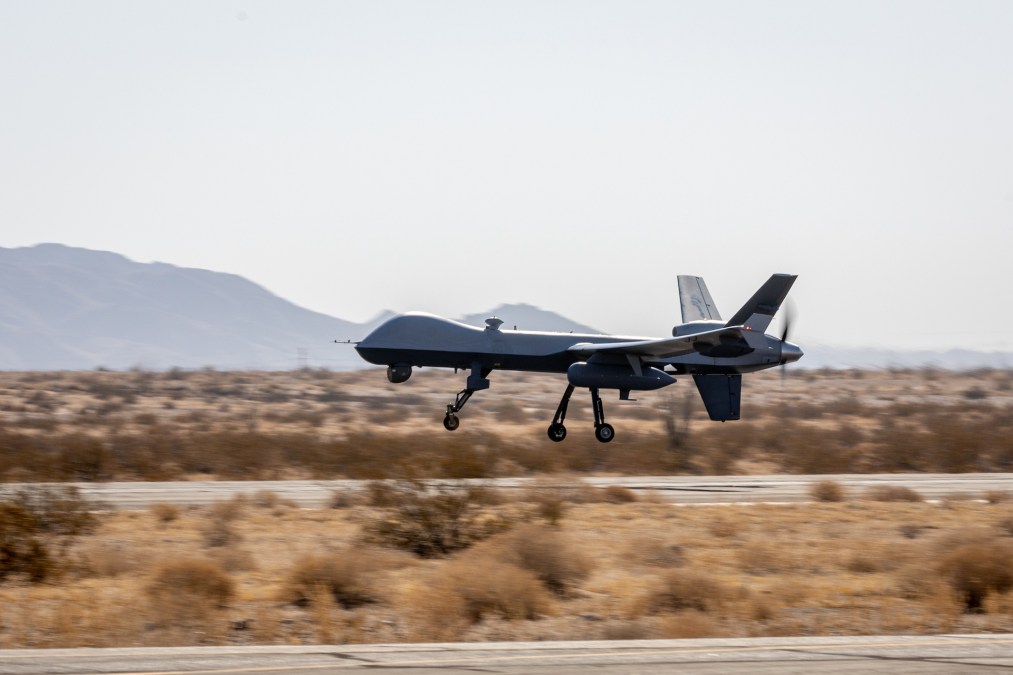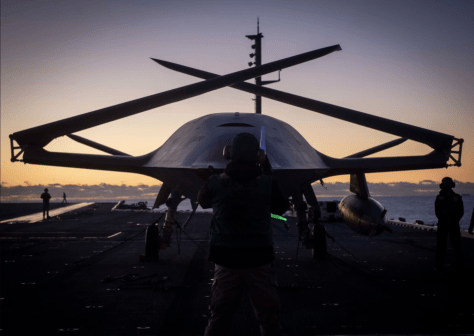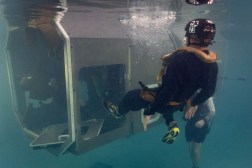Marine Corps to receive new smart sensor system for MQ-9 Reaper drones

The Marine Corps will add new capabilities to its fleet of MQ-9 Reaper drones later this year, including a smart sensor system, according to an official leading the effort.
The service is pursuing technologies for its Marine Air-Ground Task Force unmanned expeditionary (MUX) family of systems, including medium-altitude, long-endurance (MALE) drones.
Among the in-the-works tools are airborne network extension capabilities, electronic warfare pod, maritime domain awareness pod, detect-and-avoid system, proliferated low-Earth orbit command and control, and smart sensors, according to Lt. Col. Eric Duchene, integrated product team lead for combat capabilities on the MUX/MALE MQ-9A at Naval Air Systems Command’s program office for multi-mission tactical unmanned aerial systems, PMA-266.
“What that provides is AI-enabled, persistent presence in the battlespace. We’re looking to field advanced capabilities that allow us to find, fix and track our targets of interest, and then be able to disseminate that out to the MAGTF and the joint force,” he said Tuesday during a presentation at the Modern Day Marine conference, calling the smart sensor payload system “a really, really big, advanced capability.”
“This is tactical edge, high-power compute processing in the battlespace. Fielding this capability will be critical to reducing the pilot and sensor operator workload inside the battlespace to find, fix, track and target targets of interest. What this does … with sensor autonomy is it minimizes the time by automating what would normally be a manual three-ball collect on a target, of trying to find and then progressively get closer and closer to the target of interest, refine what you’re seeing, identify it. We’re looking to lessen that workload to then free up the operator to do more advanced things like develop a track and then be able to employ that and disseminate it throughout the joint force,” Duchene said.
The Marines have currently fielded 18 MQ-9As, built by General Atomics, and two more are slated to come off the production line soon, he told DefenseScoop.
A bundled release of Sky Tower II electronic warfare payloads and the smart sensor system are slated for the last quarter of this calendar year, he said.
In the future, the Corps wants its own “organic” pipeline for AI and machine learning so that these types of tools can be modified and improved to meet warfighters’ needs.
“What that does is AI and ML takes big data, it takes a lot of processing power, and by owning our own data that we’re getting off the platform, being able to retrain and update AI machine learning algorithms and then send those forward as the battlefield evolves over time” will be important, he said. “When we collect that data, we can rapidly retrain, put out new models. And you can, as an operator, eventually you’ll be able to take that and go from ‘this algorithm didn’t work,’ maybe real-time get it fixed, and then re-upload it, and now tweak your algorithm while you’re out there flying and get better fine, fix and track capability,” Duchene said.
Meanwhile, some observers are raising concerns about the survivability of Reapers in contested battlespaces. The Houthis in Yemen have recently shot down several U.S. military MQ-9s that were supporting American military operations against the group, which has been launching missiles and one-way attack drones at commercial and military vessels in the Red Sea.
At the Modern Day Marine conference, Duchene was asked how the Reaper would survive in a conflict with China or other adversaries with advanced air defense weapons.
“I would say it’s not a unique problem just for the MQ-9 Alpha,” he said. “We’re all actively working that solution. And in our system for MUX/MALE, we are also working that too, to maximize our survivability.”






